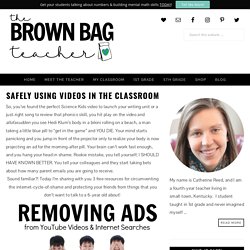Zoom
Trash

Creating with Technology. Cybersafety. Making Sense of ICT Capability in the Classroom. Recently, I was exploring the Digital Technologies Hub website (if you haven’t already been on there, spoiler: it’s awesome!)

While on there, I stumbled across a series of infographics about the ICT Capability and Digital Technologies curriculum. These infographics got me a little excited… So much so, that I sat down straight away to write this article so I could share them with you! In the Australian Curriculum, we have the ICT Capability and the Digital Technologies subject. These infographics (shown throughout this article) clearly define the distinction between the two – what needs to be addressed in each, and examples of how that might look. I often speak to teachers who are confused by these two technology-related parts of the curriculum. It is so much more than that! As teachers, we are ALL responsible for equipping students with the skills they need to be safe, smart and skilled online. There many resources to assist teachers with this. Mapping the ICT Capability. Teaching with Tech. Tech Tools. Goodnight iPad, Ann Droyd - 9780399158568. If You Give a Mouse an iPhone, Ann Droyd.
Education Department - Teaching Technology in the Early Years. Appropriate Use of Online Services All Departmental online services including Portal, email, online document storage, Intranet and Internet access, must be used responsibly and in accordance with Departmental policies.

By accessing any Departmental online services you give your full agreement and commitment to comply with all Departmental policies. You also give consent to logging, monitoring, auditing and disclosure of your use of these services. Inappropriate use of these services can result in disciplinary action that may include suspension of access to online services, dismissal or termination of contract. You can view the policies relating to the appropriate use of these services at the Our Policies website.
Students Online Policy | Telecommunications Use Policy. Education - Apple Teacher - Apple. Computer Skills. Safely Using Videos in the Classroom - The Brown Bag Teacher. So, you’ve found the perfect Science Kids video to launch your writing unit or a just-right song to review that phonics skill, you hit play on the video and allofasudden you see Hedi Klum’s body in a bikini rolling on a beach, a man taking a little blue pill to “get in the game” and YOU DIE.

Your mind starts panicking and you jump in front of the projector only to realize your body is now projecting an ad for the morning-after pill. Your brain can’t work fast enough, and you hang your head in shame. Rookie mistake, you tell yourself; I SHOULD HAVE KNOWN BETTER. You tell your colleagues and they start taking bets about how many parent emails you are going to receive. Sound familiar?! Eliminate YouTube Ads Instantly ViewPure has quickly become my go-to resource for putting YouTube videos onto a blank surface – no ads, no pop-up videos, no automatically playing videos after your video wraps-up…NOTHING! YouTube Ads – Round Two. Australian Computing Academy. Rating Websites For Research. Recap: A tool for reflection.
Flipgrid - Video for student engagement and formative assessment. Digital Technologies Hub. Educational Resources. Fake News Resources for Teachers. Resources to Help You Get Started: Super fun to have everyone jumping on the “fake news” bandwagon – we media literacy folks have been barking about this for YEARS!

Welcome! =) In no particular order, here are some resources on fake news, fake news creation and how to identify it. Remember, even if it looks real, you should still double-check. How to Spot Fake News: Common Sense Media FactCheck.Org USA Today Washington Post International Federation of Library Associations Fairly Well-Documented Fake News Sites: Fake News Sites to Avoid Fake News Lesson Plans: From PBS From KQED From the New York Times From Edutopia From C-Span Other Cool Resources on this topic: The Psychology Behind Fake News Why Our Brains are Wired to Believe Fake News How a Kid in Macedonia Makes Thousands Creating Fake News Inside the Macedonian Fake News Machine Fake News Resources from Renee Hobbs Ways Teachers are Fighting Fake News News-Decoder article from Nelson Graves My pal Michelle Ciulla Lipkin on CNN’s Reliable Sources!